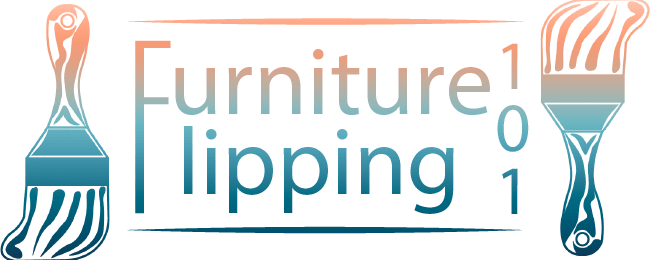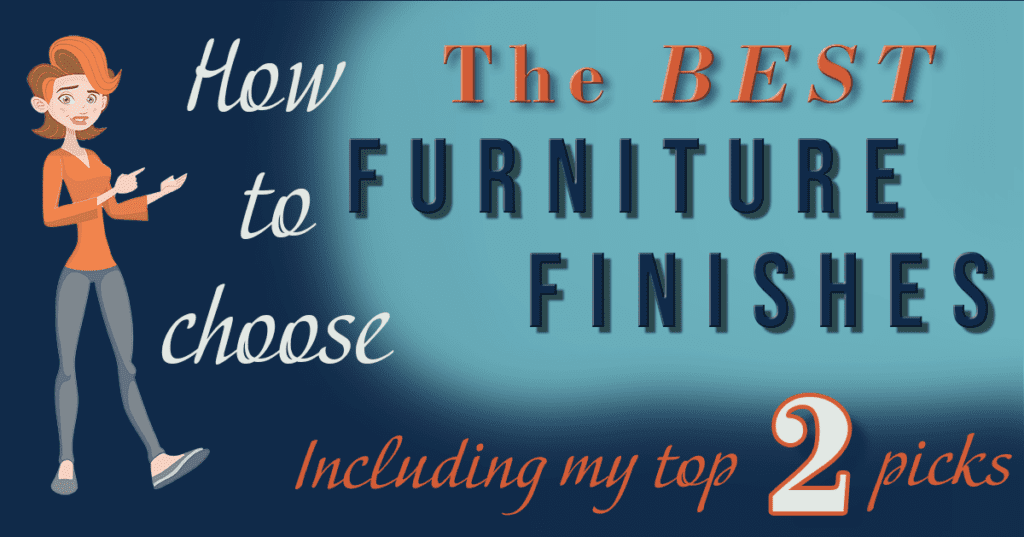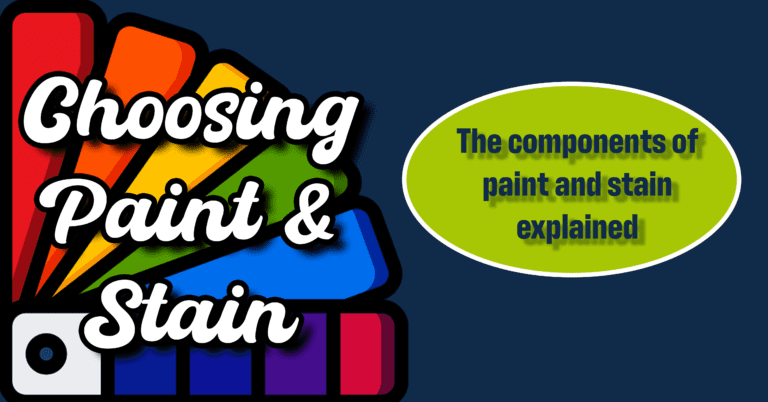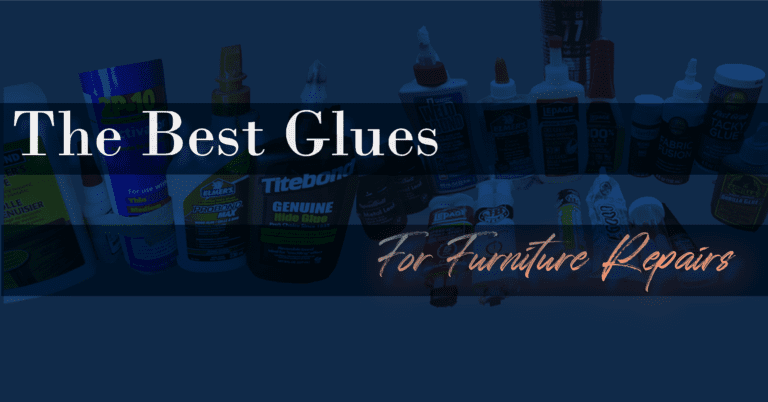Your guide to the best furniture finishes and how to use them.
Furniture Finish Options
It can be overwhelming for new refinishers or flippers to decide on furniture finishes. Most are familiar with water- or oil-based clear coats and waxes. But there are other options, too, including hard wax oils, drying oils, and even non-drying oils, plus the oil-based clear coats. Antique pieces are often finished with shellac to maintain their historical accuracy and beauty.
This guide to the best furniture finishes will cover all of these different furniture finishes and help you choose the best furniture finish for your needs.
Some of my furniture finishes...
Interested in learning more about furniture Refinishing and Furniture Finishes?
I will stick with the basics for this post and not get into the scientific side (as much as possible). Please consider expanding your understanding of the principles behind the practices by taking the Introductory Course or the full Furniture Flipping 101 program.
In the Introductory course, I introduce you to Protective Finishes and how to Select Paint and Stain. The first module, Selecting Paint and Stain, introduces the different product classes, oil, water, alcohol, and lacquer. It is vital to understand these classes and their limitations, specifically, what products you can and cannot use with one another. Later, in the Advanced course, we look at Advanced Protective Finishes. Check out the program content on the overview page here.
Your Guide to Choosing the Best Furniture Finishes
Three factors to consider when choosing the best furniture finish
For the most part, to choose the best furniture finishes, you have three factors to consider: durability, compatibility, and ease of application. Other factors, like sheen or colour, can be narrowed down further for some products. For finishes, you will usually choose a clear finish, but sometimes you can add toner or choose a coloured wax, to alter the base colour. Shellacs come in different shades, too.
1. Durability of Furniture Finishes
The first thing you should consider when choosing the best furniture finishes is durability. There are two types (arguably three) of durability for finishes, film-forming and soft. The film-forming finishes include water-based acrylic and polyurethanes, oil-based polyurethane or alkyds, or shellac and lacquers. The film forms as the product cures.
Soft finishes are waxes and oils. Drying oils, like tung, hemp, and teak oils (plus others), may form a cured film when mixed with varnish, but the finish is not as durable as the film finishes. You may feel drying oils with varnish can be classified under a third level of durability, between films and waxes.
Choose the best finish for furniture based on where you plan to use the finished piece and how durable you need the finish. And later on, I will explain how to test your drying oil’s hardness. If you aren’t sure what I mean by water or oil-based finishes, see the section below on compatibility.
Film-Forming Furniture Finishes
I use many types of finishes in my refinishing business. However, my go-to most-durable, best furniture finish is Varathane Diamond Finish for floors™. This water-based product has a non-yellowing formula and dries very durable. If you don’t have this product in your area, many flippers recommend Minwax’s Polycrylic™ clear coat, an acrylic resin in a water-borne product for its non-yellowing properties.
Do water-based finishes cause yellowing?
Yes, this is a possibility when applying them over white or light-coloured paint. I have been cautious using Varathane Diamond Finish on white and light-coloured paints, but so far, I have seen no signs of any yellowing. Yellowing often happens to white or light paints, even when you don’t add a top coat, but more often when you do. The instructions on the Varathane can caution against the possibility, so you may want to test an inconspicuous area first or do a sample board. If your finish is yellowing your light-coloured paint, I suggest using paint that doesn’t need a topcoat.
Oil-based furniture finishes
Furniture flippers often avoid oil-based polyurethanes over paints because they will turn yellow over time and add an amber hue, altering the paint colour. I suggest using a water-based product if you want a furniture finish to put over your paint.
However, oil-based furniture finishes are an excellent choice to add depth and warmth to your stained or dyed wood. A popular trend right now is to obtain a white-washed or bleached furniture finish – oil-based furniture finishes would yellow these.
Shellacs and lacquers for furniture finishes
The last two film-forming furniture finishes are shellac and lacquer. Furniture flippers or those new to refinishing don’t often use these two products as furniture finishes. Applying shellac can be a bit fussy (which can be intimidating), and lacquer (typically sprayed) can be dangerous due to its explosive nature and potentially containing isocyanates.
Is shellac a good furniture finish?
Most of us have heard of the Zinsser BIN™ shellac primer. This product is excellent for blocking tannin bleed-through on high-tannin woods before painting. If you are staining or dying wood, try clear shellac as a furniture finish for low-traffic areas. Shellac brings out the natural beauty in wood better than the plasticky look of water or oil-based finishes.
Shellac is prone to white spots when you don’t use a coaster or trivet, so it is better to use water or oil-based finishes on coffee and dining tables. When restoring old (pre-1920s) furniture, it is common to use shellac for authenticity.
The final film-forming finish is lacquer. While lacquer is a great product, it has some adverse health effects. Most refinishers don’t use lacquer unless they have the proper PPE and spray booths with explosion-proof fans. Occasionally, you may use lacquer in a spray can. Make sure you wear a respirator or work in a well-ventilated area. Try and find an isocyanate-free product.
Soft Furniture Finishes
Furniture waxes
Soft furniture finishes do not form a protective film but create a barrier that helps resist water and dirt. These finishes are not considered long-lasting or durable. You may choose to use these products due to their benefits – ease of application and the sheen, but you need to choose based on the required level of durability.
A commonly used furniture finish is wax. Historically, furniture was waxed to maintain a piece. Wax isn’t a durable finish for the most part and will not stand up over time. Pieces can get gummy and hold onto dirt after several years of waxing.
I use wax on low-traffic furniture pieces. You buff the wax to create a smooth surface, but wax, with its very low iodine number, does not cure into a film like the products mentioned above. Wax adds a nice satin finish to chalk paints or stained or dyed woods. If the furniture is for high-use areas, like a dining table or chairs, I would recommend a film-forming furniture finish.
If you choose a wax, choose one with some substance – carnauba or other paste waxes. The soft waxes that go on like oil will not last – they will wipe off or wear off on clothes. Some flippers use them to ‘refresh’ the inside of drawers, but I expect these soft waxes to transfer to anything stored in that drawer.
Drying-oils for furniture finishes
Drying oils, like tung, teak, and hemp, react with oxygen to form a soft bond, better than wax but less durable than the aforementioned film-forming finishes. Often the oils are a varnish blend – the varnish forms a film as it cures, but the oil component weakens it. You can test how much of a film your drying oil creates by pouring a small puddle and testing it with a fingernail or other hard object once it has cured. If the puddle remains pliable, it will not provide much protection. Those that cannot be easily dented are more durable.
Generally, drying oils are applied to bare wood. You can stain beforehand, but the oil imparts a colour. You can also apply drying oils over paint, preferably chalk paint, because it is porous. Other paints may not absorb them.
Non-drying oils are not furniture finishes
There is a finish that I will cover for completeness, but it is not one I recommend as a furniture finish. Non-drying oils, like orange and mineral oils, can interfere with future finishes. Drying refers to the curing process – non-drying oils do not cure and remain ‘wet’ in the wood. Removing them can be difficult because these products soak deep into the wood fibres. Most people use non-drying oils on cutting boards or countertops.
Hard-wax oils for furniture finishes
The best finish for furniture (wood, not painted), in my opinion, is a hard-wax oil. While they are not that new – they have been used for years as flooring finishes, hard-wax oils are coming into their own now as the best furniture finishes. Why? Because they offer the durability of a film but the repairability of a drying oil or wax. And they bring out the beauty in the wood. Check out the Blacktail Studio website for some great tutorials on how to apply these products.
I have not used many of these products, just the Osmo PolyX and the Osmo waxes. My next purchase will be the Rubio Monocoat 2-part system. You will probably choke a little on the prices when you price them out. Don’t worry; these finishes go a long, long way with very little product.
I used less than this little can (125 ml/4 oz) of Osmo Poly-X ™ for an entire dresser. Seriously. Poly-x and other hybrid products, often with two-part components, are above and beyond the durability of waxes or drying oils and could be put in a class on their own. Their ease of application and their excellent durability make hard-wax oils a product to try.
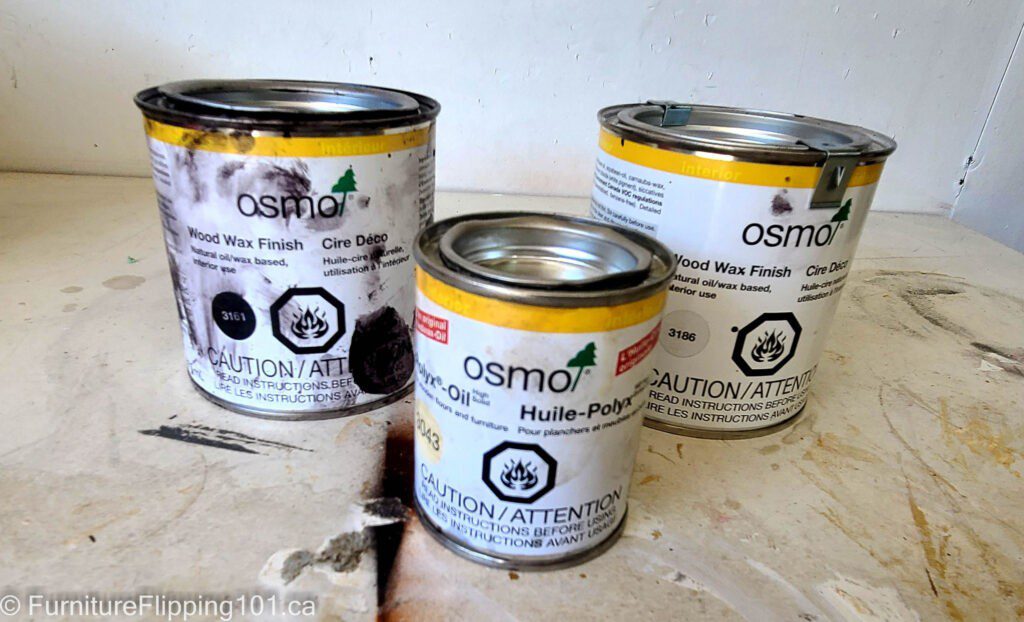
Refreshing soft furniture finishes
Soft furniture finishes need periodic refreshing. Drying oils will last longer than wax or non-drying oils. The hard-wax oils will need to be refreshed, but they hold up well and are easy to apply another coat when needed. When the finish starts looking dry, and loses its luster, it’s time to refresh. Follow the manufacturer’s instructions or, if not given, you can use mineral spirits to clean the surface of dirt and oils before reapplying.
Use soft furniture finishes for effect rather than durability
Often, I use waxes and drying oils over another finish for effect (sheen). I also use them on small items like jewelry boxes. Hemp oil over chalk-style paint creates a lovely finish too. Just remember that this is not a durable finish.
2. Compatibility
The next factor you need to consider is whether or not the furniture finish you choose is compatible with other products on the same piece.
Product Classes
For this section, you should understand the different product classes or at least be able to identify them. I tend to remember the classes based on their solvents or thinners. You use the solvents/thinners to clean up after using the products. There is a lot more to these concepts, which I teach, but for now, here are the basics:
- Water-based products clean up with soap and water. Newer product innovations have started suspending oil-based alkyds (and lacquers) in water-based formulations. Always read the product label because the products are incompatible, despite appearing to be. Unless explicitly stated on the label, you cannot thin these hybrids with water or combine them with traditional water-based finishes.
- Oil-based products clean up with mineral spirits. Read the labels and always take precautions with the rags and brushes – these can self-combust due to heat caused by curing. Mineral spirits thin most oil-based products, but always read the label. Drying oils usually fall into this category, but I have used soap and water to clean up after hemp oil. Non-drying oils like mineral, walnut, or olive oil clean up with soap and water but are obviously oil-based.
- Alcohol-based products clean up with alcohol. I use methylated spirits, but some countries/states have different forms, like denatured alcohol. Shellacs are alcohol-based, and I sometimes refer to them as shellac-based since, since, other than some dyes, I don’t use any other alcohol-based products.
- Lacquer-based products clean up with lacquer thinner.
Note: Waxes are generally oil-based – they use mineral spirits or similar solvents. Dixie Belle claims a water-based wax, which always strikes me as interesting since wax is hydrophobic. But science can create interesting hybrids, and I am not privy to the proprietary formulas.
Brands
It might surprise you, but using two brands together, even when the same product class, can cause compatibility issues. General Finishes cautions there may be compatibility issues when using different brands with their products. I have used the Varathane Diamond Finish over General Finishes gel stain without a problem, but you should always test before using two different brands together.
Like Oil and Water
A problem you could run into are incompatible product classes. Oil-based paints are incompatible with water-based paints when applying water over oil. The water-based paint will lace. I ran into this recently when we refinished some second-hand doors we bought from Facebook Marketplace. You can apply oil paint over water-based paint, however. To solve the problem of oil-based paint on our doors, we used the Zinsser BIN2 oil-based primer, which is compatible with water-based paint. Other brands of primers also work as bridging agents.
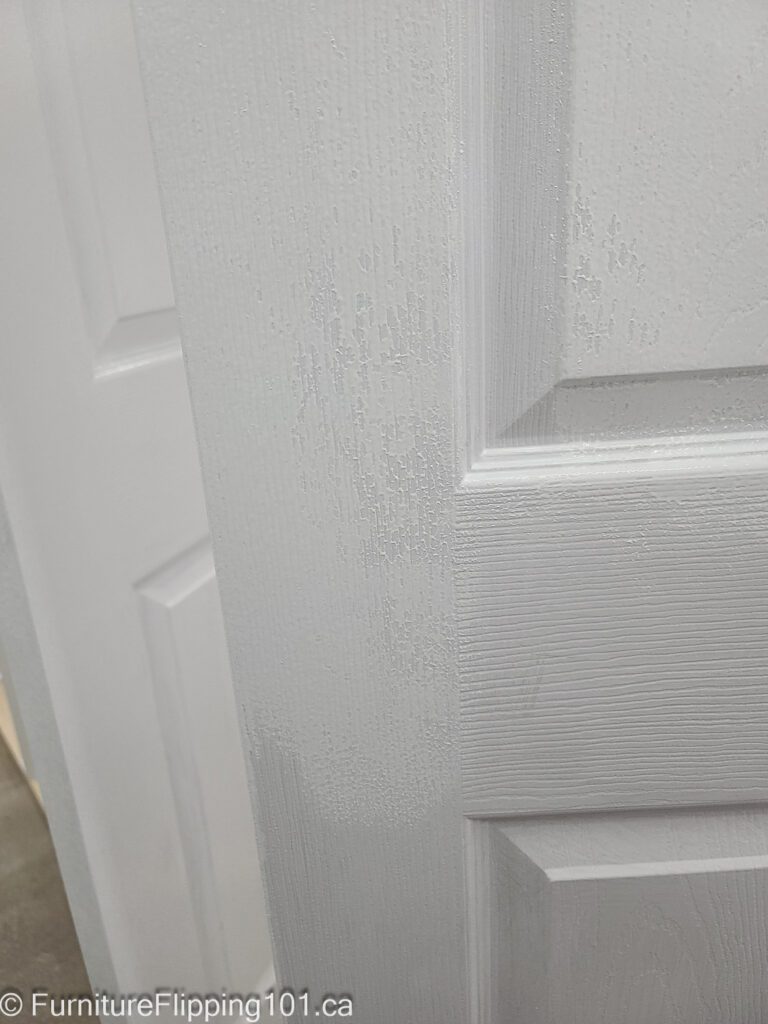
However, you can put water-based finishes over oil-based stains. The stain has to dry for at least 72 hours, and then it will be safe to topcoat. You can apply oil-based finishes over drying oils, but I would question why. It is simpler to skip the drying oils since you will lose any of their properties when you apply the film-forming finish. Always test a small area for compatibility because each product can have different properties.
Shellac
Naturally occurring shellac contains a small amount of wax. Because of this, only use dewaxed shellac products when applying another product over them. Dewaxed shellac is a universal bridging product, i.e. it is compatible with all of the finishes mentioned here; therefore, if you have any unknown finish or encounter adhesion problems, using clear, dewaxed shellac between coats can help solve compatibility issues.
The Same Furniture Finish
Surprisingly, sometimes, we can run into compatibility issues with the same product classes. Water and oil-based products form a film; if you wait too long, the film is too hard for the next coat to adhere. You can solve this problem by lightly sanding with higher-grit sandpaper; a used 220 sanding sponge or 400-grit sandpaper works well, then clean off the sanding dust and apply the next coat. This step also helps remove brush strokes and dust nibs. Shellac and lacquer will melt into the previous layer, so they don’t require this step.
Another problem we sometimes encounter is putting a water-based finish over a water-based paint, stain, dye, or oil over oil. The solvents in the finish lift the previous layer – your brush will start to pick up colour. You can use oil over water, water over oil, spray the finish on, or accept the problem and try not to contaminate an entire container. I usually pour my finish into smaller yogurt containers, so this doesn’t happen. After the first coat, you should not notice any colour lifting.
Waxes
Wax’s hydrophobic properties make it incompatible with water-based products. You can put wax over water-based products, but not water over wax. Some wax products, like beeswax/oil blends, are very ‘light’ and not as hydrophobic as other heavy waxes like carnauba. (This may be why you can paint over Dixie Belle’s water-based wax??) The different properties of waxes and the various blends make it difficult to say 100% that the wax will cause adhesion issues, but the best rule of thumb is to say no to wax under any water-based product.
Oil-based products are not compatible with waxes either, but the solvents in the oil-based products may loosen or even remove wax. You can use mineral spirits as a solvent to remove wax and thin oil-based products. Still, the same rule of thumb is not to use wax under oil-based products. Ideally, we try and create the most durable finish to ensure longevity.
Use mineral spirits or lacquer thinner to remove waxes. If you still have trouble, use dewaxed shellac to bridge between coats.
3. Ease of Application
Ease of application is often another factor, especially for new furniture refinishers. I believe this is why we see a lot of waxed finishes. Chalk paint takes wax wonderfully and develops a great patina. The issue is durability. So, even though you can apply wax or oil without as much trouble, consider how well it will hold up.
There are many tips and tricks to apply a finish without brush strokes. My favourite brush (I will have it in my online shop soon!) leaves very few brush strokes. You can also spray your finishes for professional results.
Oil-based finishes dry slower (and cure faster), so they are often prone to dust nibs. Ideally, your area will be dust-free, but that will probably not happen. You can use spray tents to help control the dust or use sandpaper to remove the nibs between coats. Water-based products dry fast, so nibs aren’t as problematic as brushstrokes.
Hard-wax oils are easy to apply, but you must know how to apply them. See the link I posted earlier to the Blacktail Studio website.
What not to use on furniture
I will get on my soapbox for a second – some products, like Howard’s Restore a Finish ™, contain non-drying oils like mineral oil. As mentioned earlier, I do not consider non-drying oils a good choice for furniture finishes. Sadly, I see this product recommended over and over in painting groups. Some antique groups have even banned it from being recommended due to the problems it can cause when refinishing! Additionally, while these products look good initially, they can quickly wear off and leave the wood vulnerable to moisture and dirt. You would not use this as a stand-alone furniture finish, but furniture flippers and furniture stores use it in place of refinishing.
To help you understand the product better you can read its MSDS sheet. Note that the line “hazardous polymerization does not occur” indicates it contains no drying resins. When oil-based resins cure (polymerize), they give off heat, which can cause rags and brushes to self-combust (hazardous). Therefore, saying polymerization doesn’t occur indicates there are no resins or drying oils in the product. Based on the rest of the warnings for the product, they are not referring to health hazards when they say hazardous, since plenty of the included ingredients are health hazards. And distillates (petroleum), hydrotreated heavy paraffinic: OIL MIST, MINERAL tells me it contains mineral oil. I am reading between the lines a little since companies do not give out their full ingredient list to prevent others from replicating it.
You can apply non-drying oils to your cutting boards and counters. But you should not use these on finished furniture due to their minimal protection over time and the difficulty in entirely removing them to refinish. In my opinion, these products are a temporary fix that will potentially result in upset customers as they realize the piece of furniture has lost its lustre and is now susceptible to damage. If you are using or recommending these products, please reconsider. <end rant>
Another (or several) products that cause problems are products containing silicone. Many furniture polishes have silicone because it repels dust so well. Unfortunately, it also causes fisheye for anyone trying to refinish the furniture. Avoid pieces with furniture polish, where possible (not that easy to tell), or use a bridging agent if you run into fisheye. Shellac is a great bridging agent for silicone.
Things to consider when choosing the best furniture finish
- Choose a furniture finish based on its durability and compatibility with the existing products.
- Watch for issues like lacing, fisheye, or the finish not adhering, which are signs of incompatibility or contamination. If you need to bridge, use dewaxed shellac. You can use wax and shellac over any other product. Oil-based products, too, will likely go over them all, except for lacquer. But make logical decisions on what products you are layering. Adding many layers won’t gain durability – this can cause problems with curing.
- Water-based furniture finishes are usually the easiest to clean up and have the lowest VOCs. Polyurethane products can turn whites and light colours yellow, whether oil or water-based.
- Oil-based and shellac furniture finishes add depth to stained or dyed woods, but oil-based furniture finishes will turn yellow with time. Shellac doesn’t yellow with time but can be found in amber or garnet formulations and can get grimy and alligator over the years (decades – so not really a concern).
- Many people choose waxes and oils over film-forming furniture finishes due to the ease of application and lack of brush strokes. These products are often not durable enough for their end use.
My recommendations for the best furniture finishes
My recommendations for the best furniture finishes are Varathane Diamond Finish for floors (satin is my go-to sheen) if going over paints (especially chalk-style paints) or stains, or try a hard-wax oil like Osmo PolyX or Rubio Monocoat if finishing stained wood.
In upcoming articles, I can cover products like sanding sealers and pore fillers if you feel that would be helpful. Let me know if you have any questions or comments below.
